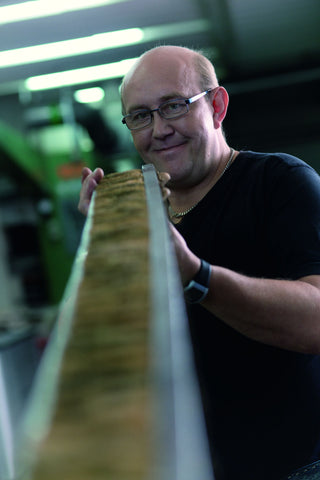The Sign of the Thistle
The thistle: a superficial analysis.
We do not want you to think that we are shallow; however, we have to admit that we are very much into looks. We certainly make sure our scarves look beautiful, but we are also invested in a specific plant: the weaver's thistle. We all know what a thistle is. They poke us when we are out walking and are not particularly pretty in a vase. However, one thing this prickly character is excellent at doing is combing; which is why it was once known as the “wolf's comb”. The spines of the dried plant are perfectly suited for brushing the surface of a fabric without damaging its sensitive fibers in the process. The countless tiny barbed hooks are better than any other tool at bringing cashmere to a perfectly soft finish.
Please do not attempt this on your own as you cannot simply run a rough thistle over fine wool material to achieve our finish. You would need to treat the thistles first to make sure they do not wear away too much of the fabric.

Our thistles are placed in hot water and lightly flattened. Only then do we attach them to rails by hand, which are later fixed onto drums. This takes place in the wet spreading machine that requires special expertise. The loops will not all be completely even – after all, we are processing a natural product. For this reason, large and small thistle heads (over 1,200 of them) are alternately affixed. And that is no mean feat because the thistles are hot from the water and naturally prickly. Due to the enormous effort it involves, we are one of the few firms that still use this technique. However, we can only ensure our exceptional quality and shiny result in this way.
Why go through all of this? Only this specific finishing technique makes our cashmere scarves feather soft and fluffy and we have loved and used it here at FRAAS since the company was founded in 1880. Thus, it is no wonder that we have captured it in our brand logo.




